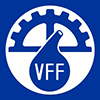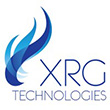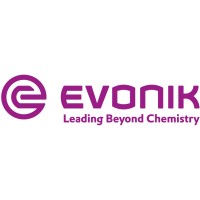-
Visual MESA® Greenhouse Gas Emissions Management
Emissions management systems are becoming a required tool for monitoring, controlling, and reporting all greenhouse gas emissions. As a result, the process industry must be prepared to improve the integrity, discipline, and credibility of emissions data systems, while meeting minimum system requirements to operate. Today, modern analytics, data gathering, and system sharing offer businesses real benefits. It goes beyond data and reporting when compared with informal tools of ...
-
It’s time to give your reactor some HELPsc™
Excessive pressure drop build-up issues in hydroprocessing reactors are often keeping units from delivering maximum value. Refiners are forced to perform premature shutdowns for costly catalyst skimming operations resulting in lost profit. Topsoe’s High-Efficiency Liquid Phase scale catcher (HELPsc™) is a specialized patent-pending reactor internal technology that works in synergy with the graded bed. Installation of the technology will significantly prolong the ...
-
Neles™ top-guided globe valve, series GU
Superior control performance and high reliability for wide range of applications from general to demanding service. Neles series GU globe valves provide superior control performance and high reliability in wide range of applications. Standard units are equipped with Neles diaphragm actuators and Neles valve controllers for precise flow control, extended operation life and performance monitoring online.
-
Oil sands crude — profits and problems?
Canadian bitumen production currently runs about 1 MMbpd, with some being sold as Synbit and Dilbit. Over the next 10-12 years output is expected to increase to 3.5 MMbpd and more refiners will begin investing to process it and come to depend on the Synbit and Dilbit for a significant part of their supply. Few today, however, have ever processed these feeds at high blend ratios, and are unaware that conventional process and equipment designs are not up to the job. Canadian oil ...
-
New design features enhance separation performance
The Shell Schoepentoeter™ is a vane-type inlet device for feeding high momentum gas-liquid mixtures into separators or distillation columns. The Schoepentoeter has two main functions: separating the liquid from the vapor and evenly distributing the vapor in the gas compartment of the vessel. While Schoepentoeters have been recognized as the primary choice of radial inlet device in many separator vessels, performance in distillation columns has been challenged by proponents ...
-
Precision and portability in a top of the line FT-IR fuel analyzer. For more than 20 years, PAC has been at the forefront of infrared (IR) fuel analysis with its PetroSpec products. Now we are combining the best of our GS PPA, TD PPA and QuickSpec capabilities into one analyzer and adding the latest FT-IR technology into the most robust fuel analyzer in the market. The user-friendly system allows the operator to measure many properties at once with a simple touch of a button, ...
-
CeraLine elbows, pipe & spool linings
Specifically designed for the harsh environments within mining, power generation and other heavy industrial processing industries, Blasch’s new CeraLine family of products exhibits exceptional wear and abrasion resistance which results in unparalleled life. Elbow diameters ranging from ½” up to several feet can be lined with Blasch pre-cast tight tolerance shapes available with engineered joints and smooth bore that eliminates premature wear and interrupted flow. Available ...
-
LB 350 - Online Moisture Analyzer
Radiometric moisture analyser for representative and robust measurements on bulk material. The LB 350 is a moisture measurement system for real-time determination of the moisture content of a wide variety of different bulk materials such as: * Coke * Sinter mixture * Ore * Sand * Building material
-
Crystaphase, there is no magic behind reactor performance
It’s not magic. It’s science. Hydroprocessors know the wall that lies between them and peak reactor performance. Fouling, pressure drop, precipitation, agglomeration, polymerization, and catalyst deactivation, these obstacles build up, block by block. We help you break through that wall, clearing your path to performance. With highly specialized expertise and unique, industry-proven solutions, Crystaphase has helped refiners all over the world achieve unprecedented ...
-
Operating a fouled process unit? What is it costing you?
ITW Online Cleaning Technology, applied proactively during a run, restores unit performance to near start of run conditions in as low as 24 hours oil-to-oil without the need for opening equipment. By utilizing ITW’s patented asphaltene stabilization and/or polymer modification technologies, even the most severe fouling problems can be effectively handled. ITW Online Cleaning has an immediate return on investment (ROI). All the benefits are immediately monetized in terms ...
-
For many decades, VFF droplet separators have been successfully used in a large variety of applications and design forms — up to 18 m in diameter. Wire mesh droplet separators (Demister) are used for the removal of small liquid droplets (aerosols) from exhaust gases, exhaust air and steam. VFF’s portfolio includes a wide range of practical experience in the following applications and devices: - Absorbers - Seawater desalination equipment - Washers - Sulphuric acid plants - ...
-
Unrivalled combustion expertise, superior heat transfer solutions
XRG Technologies is an innovative engineering and procurement firm specializing in fired equipment for the refining, petrochemical, and power markets. We collaborate with our partners to solve complex problems and manage projects from concept to completion. Our staff of industry experts will partner with you and function as your outside engineering support team. We have brought together a team of burner, fired heater, boiler, flare, vapor recovery and thermal oxidizer experts ...
-
Advanced Analytical Instrumentation for Lab Applications
PAC offers an extensive product portfolio with cutting edge solutions for gas chromatography, elemental analysis, physical properties, fuels composition, and laboratory automation. PAC complies with ISO 9001 and ISO 17025 standards, which guarantees the quality of our products and reaffirms our commitment to quality, precision and customer support. We're an industry leader in standards development, and we work tirelessly to establish benchmark procedures that scientists and ...
-
How grab sampling can help improve your plants safety
While grab sampling can be a dangerous and hazardous process for both operators and their surrounding environment, too often safety takes a back seat to other day-to-day considerations. If this sounds familiar, tune into this sponsored webinar. It's your opportunity to focus on areas in your plant where safety is a concern and learn methods for ensuring sampling that is not only safe and effective, but also representative. In this webinar, you'll examine hazards associated ...
-
Optimizing the value of your unloaded catalyst
The metals contained in spent catalysts offer a valuable follow-on revenue source, but how can you be sure to achieve a fair settlement or receive top dollar? You also need to balance demands of sustainability and lowered environmental impact with ease of recovery and settlement. This webinar gives you an introduction to the precious and base metal management cycle in catalysts and specifically provides you with tips for ensuring a high quality and accurate precious metal settlement, ...
-
Unleash the potential of your Naphtha Steam Cracker
The global ethylene market grows at 3.0-3.5% annually, which amounts to 6-7 MM MTA increase in demand every year. Greater than 95% of ethylene is produced using steam cracking. The two of the main feedstocks for steam crackers are naphtha and ethane with each supplying >45% of all ethylene production. Ethane cracking tends to have lower Cash Cost of Production, supply is regional and insufficient to meet the global ethylene demand. Naphtha cracking has several disadvantages: ...
-
CDU desalter processing with interface control
In this webinar, you will find out how Tracerco’s advanced multi-phase nucleonic instrumentation can analyse desalter performance and improve crude blending capacity. Discover opportunities to: - Improve environmental impact, compliance and energy usage - Reduce unplanned trips and downtime - Optimise chemical dosing (demulsifiers/neutralisers) - Reduce overhead corrosion, as well as catalyst deactivation in FCC - Improve process control enabling data driven insights With ...
-
An introduction to Sinopec Hydrocracking Technologies
This webinar gives you an overview and understanding of hydrocracking and its applications, with an emphasis on technologies and catalysts developed by Sinopec and its research arm, Sinopec Fushun Research Institute of Petroleum and Petrochemicals (Sinopec FRIPP). You will first get an introduction to hydrocracking including feed processing and target output products. Commercial considerations include market share and reference installations such as 40 hydrocracking units designed ...
-
How turbomachinery can support decarbonization
With the hydrocarbon processing industry’s efforts to decarbonize, hydrogen and Carbon Capture Utilization and Storage (CCUS) have further moved into focus as viable alternatives for transforming existing energy markets. Both hydrogen and CO2 provide ample opportunities to be used in hydrocarbon processes either in molecular form or as feedstock. At the same time, the unique physical properties of both hydrogen and CO2 can make them a challenge for process equipment such as ...
-
Technologies to enhance Ethylene production
In this presentation, three technologies will be introduced. This first is swirling element radiant tube (SERTTM) technology for steam cracking furnaces. In this technology, you will find how heat transfer theory is applied to overcoming the challenges of cracking pyrolysis to meet targets. Successful commercial cases will demonstrate the technical advantages of SERTTM technology. Cracking furnaces with SERTTM technology have longer operating days, lower tube wall temperature ...
-
Steam Cracker recycle processing and product upgrade options
LPG and light naphtha generated in a refinery complex (from both straight-run and conversion units) are sent to the ethylene cracker as feedstock. There is more i-paraffin than n-paraffin in LPG and light naphtha generated from a hydrocracker and reformer, in particular, i-butane and i-pentane. When cracking i-paraffin and n-paraffin separately in an ethylene cracker, the yield of ethylene and propylene is different; n-paraffin can generate 20wt% of “ethylene + propylene + butadiene” ...
-
Advances in benzene derivatives production
Xylene and ethylbenzene are important benzene derivatives. In this presentation, you will learn about recent advances in the production process and catalysts of xylene and ethylbenzene. Xylene production is one of the most important aromatic producing processes. You will learn the details of process technology introduction and catalyst features of aromatics transalkylation developed by Sinopec, as well as the process strategies of raw material expansion, Inferior feed tolerance, ...
-
Deep catalytic cracking technology for maximizing the production of chemicals
Optimization of light olefins (including ethylene, propylene and butene) production has become one of the most competitive options for refiners in the transition. Compared with conventional FCC, FCC technologies which optimized propylene production are helping refiners to restructure their product configuration, from fuel to petrochemical production. You will learn some successful commercial cases, which are aimed to help refiners to select the most suitable and competitive ...
-
Decarbonization with hydrogen solutions
Demand for hydrogen is expected to increase up to ten-fold by 2050 when multiple industry reports predict 8-24% of the world's final energy demand will be supplied by hydrogen. Hydrogen has a unique ability to address and ˜hard-to-decarbonize' sectors including refining, chemicals, steel, heating, long-haul transport, and long-term power storage and all of which currently produce significant CO2 emissions. To achieve this, hydrogen must be produced with significantly lower carbon ...
-
Enabling circularity via plastics chemical recycling
Chemical recycling of plastics is an emerging route to supplement mechanical recycling since polymers can be converted into monomer form. As opposed to mechanical recycling, wherein the polymer properties degrade with each cycle, the monomers can be re-polymerized without any polymer property degradation. Petrochemical and refining operations of the future will include more plastics oil, obtained from chemical recycling, in the feedstock mix to establish circularity in the ...
-
Best Practice: Screening and QC testing of petroleum products and fuels
Screening and quality control of petroleum products and fuels can be a tedious and expensive process when performed utilizing traditional methods. Near-Infrared spectroscopy (NIRS) as described in ASTM Guidelines E1655, D8340, and D6122 is a much faster method providing results in just 30 seconds without any solvents and reagents needed. In fact, NIRS has become the preferred method of numerous producers to quickly quantify key parameters in petrofuels and petrochemicals ...




































